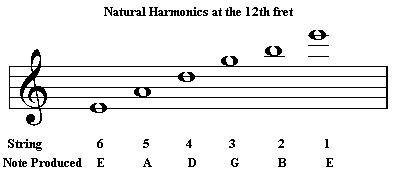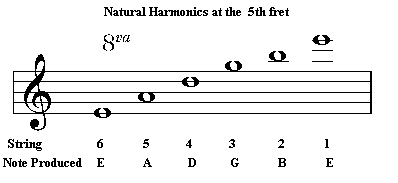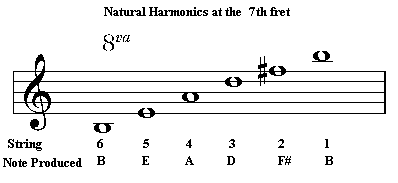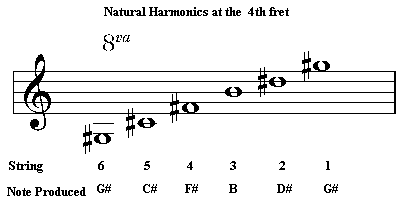Natural Harmonics are those that are produced by lightly touching the string above a point in the string length which divides the string into equal parts. When playing harmonics at the 12th fret , we are dividing the string into two halves, which oscillate to produce the bell like chime called a harmonic. The harmonics at the fifth fret divide the string into quarters, the 7th fret into thirds and the 4th fret into fifths.
Other natural harmonics do occur, but these are the most useful. Because dividing the string length into equal divisions produces the harmonic, it is worth noting that sometimes these dividing points, called nodes, don't always sit exactly on top of the frets. The 4th fret harmonics are found slightly behind the fourth fret. It will depend to some degree in your own instruments perfection.
As already mentioned the most common Harmonics are found at the 12th fret, 5th fret, 7th fret and 4th fret. When a harmonic is correctly sounded, a bell like chime is produced which can be incorporated into any style of Guitar playing to add a special effect to a song. I particularly like to use them for delicate endings.
The way to produce the harmonic is to lightly touch the string directly above the fret at which the harmonic will sound, don't push the string down to the fretboard, simply rest your finger on the string then pick the string with your other hand. As soon as the chime is sounded remove your finger so you don't accidentally touch the string and stop the harmonic from ringing. The easiest harmonic to produce is the E chime on the 6th string at the 12th fret.
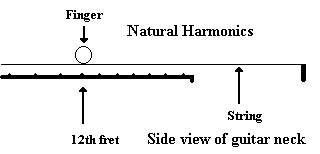
Once you have mastered the harmonics at the 12th fret for all strings, try to produce others at the 5th, 7th and 4th frets using the same technique. The 4th fret harmonics are slightly more difficult to master.
The following diagrams show the notes produced by the Natural Harmonics at these different fret positions.
